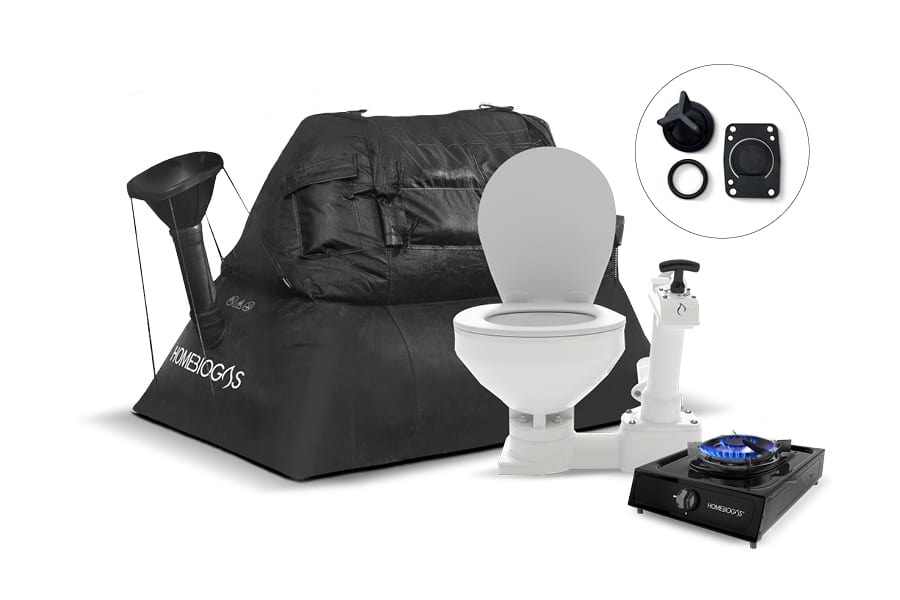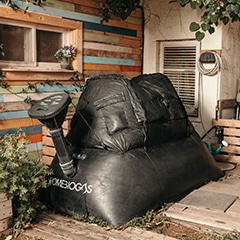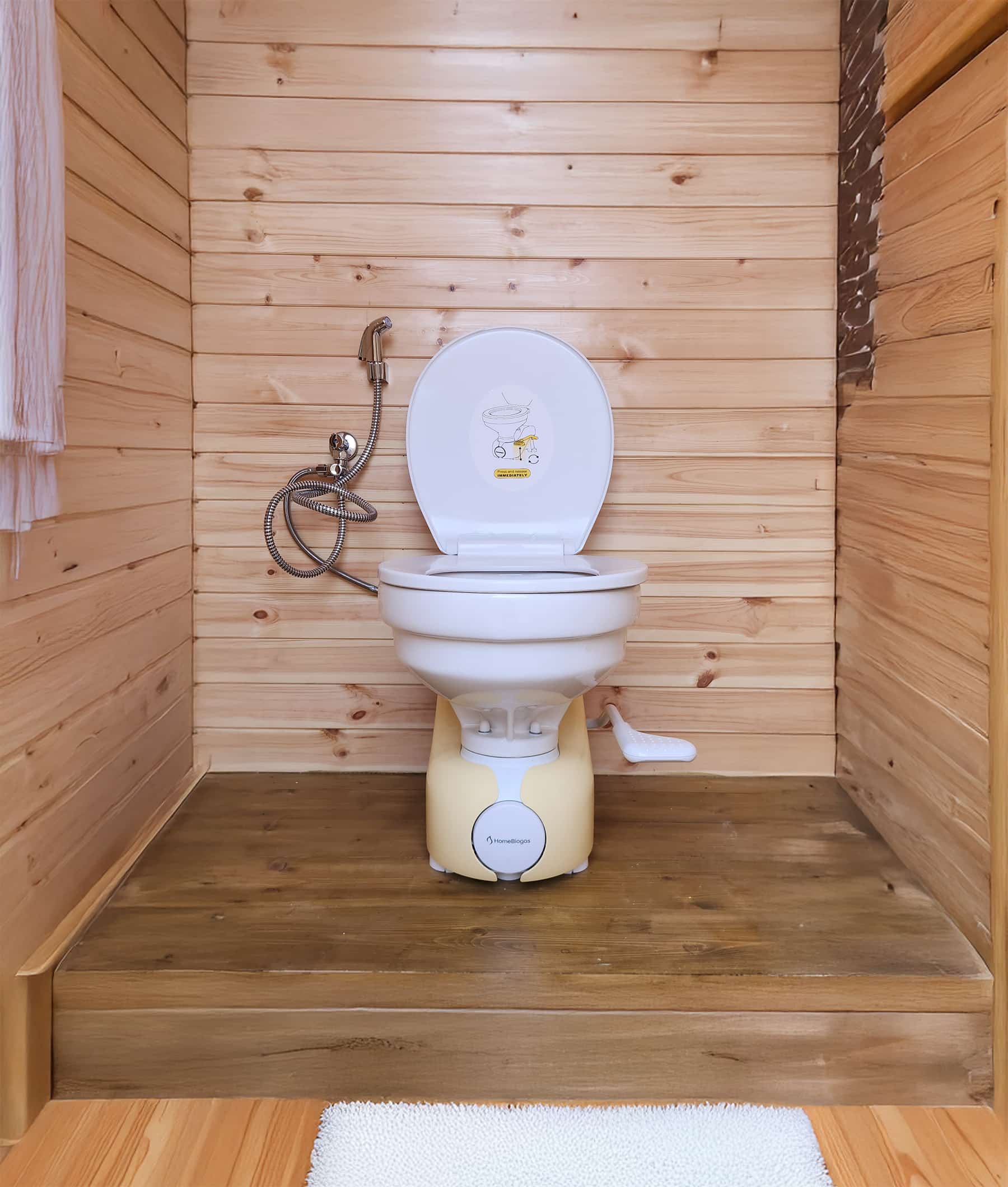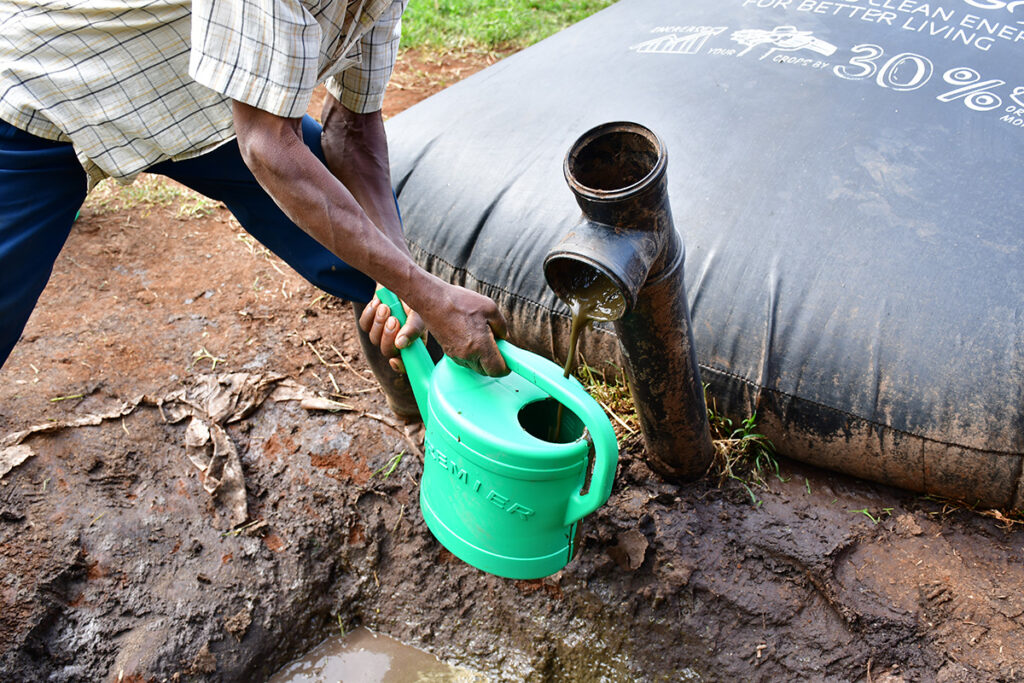
The 5Ws of a Composting Toilet
What is a composting toilet? It’s a waste management solution that collects and composts human waste.
Who can use a composting toilet? Anyone can learn to use a compositing toilet. Recently, these toilets have gained popularity among eco-conscious individuals who want to minimize their impact on the planet, homeowners who live off-grid, boat and RV owners, campers, and other outdoor enthusiasts.
Where can you use a composting toilet? It depends on local laws and regulations. Many states accept composting toilets without limitations; others might require permits or special training. Alabama, Alaska, California, Delaware, Iowa, Missouri, and Oklahoma don’t have any regulations regarding these systems.
When should you use a composting toilet? Consider a composting toilet when you don’t want to waste more water than necessary. It’s also a great choice when you live in a remote area, have an off-grid property without access to a sewage system, use a boat or RV, or visit a glamping site.
Why should I use a composting toilet? It’s a cost-effective, efficient waste management solution when you can’t access the sewage system. Plus, it reduces water usage, produces nutrient-rich compost to support plant growth, and prevents human waste from ending up in landfills where it can contaminate water and soil.
How Does It Work?
The good news is that a composting toilet is not a regular privy or outhouse. There’s no strange smell, and cleaning is straightforward. The system breaks down the waste, minimizing odors and producing valuable compost. Its efficiency comes from separating liquid waste (urine) from solid waste without flushing.
For this to happen, a composting toilet must have different chambers and systems to handle each type of waste.
Liquid waste management depends on the model. Some composting toilets use aerobic digestion to break down the urine and facilitate evaporation, while others rely on exhaust fans. Alternatively, some models use a diverter to collect the liquid in a separate container or redirect it to a soak-away pit.
The solid waste goes to a separate chamber where aerobic organisms break it down to produce compost. The decomposition process requires the presence of an additional component — small amounts of carbon-rich material, which balances the nitrogen content in the waste and acts as an absorbent. Wood chips, peat moss, ash straw, or sawdust are the most commonly used materials.
A composting toilet works appropriately when a series of environmental conditions occur:
- The decomposition chamber has enough oxygen for the bacteria to thrive and break down the waste. So, you need a proper ventilation system or vent pipes to maintain optimal oxygen levels.
- Regular aeration is required to maintain air circulation and prevent the waste from becoming compacted. You can achieve this by turning or stirring the waste, either manually or automatically.
- The temperature range in the composting chamber must be between 40 and 60 degrees Celsius (104 to 140 degrees Fahrenheit).
The timeframe for a composting toilet to transform waste into compost can vary significantly, typically from 6 months to two years. Several factors influence the duration of the composting process, including temperature, humidity levels, and the management of the nitrogen-to-carbon ratio.
Once the composting chamber reaches capacity, you must transfer the decomposed waste to a dedicated location for further composting. It’s essential to wait until the decomposition process is over before using the compost in your garden.

Advantages & Disadvantages of Composting Toilets
Benefits of Using a Composting Toilet
- Water conservation. Unlike traditional flush toilets, composting ones eliminate water-based waste disposal. If you make the responsible choice to stop flushing, you can save more than 6600 gallons (24,984 L) of water per person annually.
- Waste reduction. Instead of overflowing landfills or putting a strain on sewage treatment systems, you convert human waste into valuable compost, minimizing environmental impact.
- Sustainability. A composting toilet is a closed-loop system that transforms waste into a valuable resource to enrich the soil, support plant growth, and reduce reliance on synthetic fertilizers.
- Versatility. With many models available, these toilets are ideal for houses of all sizes everywhere, including sensitive locations.
Disadvantages of Using a Composting Toilet
- Maintenance & management. When you use a composting toilet, you must permanently monitor temperature, moisture levels, oxygen supply, and the carbon-to-nitrogen ratio. You stop worrying about them, and you risk unpleasant odors, inefficient decomposition, or potential health hazards.
- The initial cost. Besides the unit’s price, you’ll have to handle installation costs and any necessary modifications to plumbing or electrical systems.
- Limited acceptance and accessibility. Local building codes, health regulations, or zoning restrictions may impose limitations or even prohibit the installation and use of composting toilets.
- Learning curve and adjustment period. Composting toilets operate differently, so you’ll need time to familiarize yourself with maintenance procedures and best practices. Moreover, some of your family members or friends may find this adjustment challenging and even feel uncomfortable with composting human waste.
Is It Really Worth It?
It depends on your goals and lifestyle. When the alternatives are a simple hole in the ground or the costly investment of connecting your toilet to a sewage system, a composting toilet emerges as an excellent choice. It offers a hygienic and odor-free option.
Having a composting toilet is a worthwhile investment when you live in a remote area, have a garden far from the house, want to be self-sustainable, or enjoy camping, as it offers convenience and comfort.
You save money on plumbing expenses and contribute to waste reduction, water conservation, and the environment’s overall health.
It’s a wise decision for individuals who value cost savings and are conscious of their environmental impact.
Different Types Of Composting Toilets
Self-Contained Composting Toilets
Self-contained composting toilets use a combination of aerobic decomposition and evaporation or aerobic decomposition and urine diverting to break down waste. These models come as a single unit that combines the toilet bowl and the composting chamber. They are typically compact and suitable for small spaces, making them a popular choice for tiny homes, RVs, or boats.
Central or Remote Composting toilets
A remote composting toilet separates the toilet fixture from the composting chamber. The two modules connect through a ventilation system or a pipe, allowing the composting chamber to be located further away. Depending on the available space, it can be in a basement or an outdoor enclosure.
Vermicomposting Toilets
These models use worms for the decomposition process. They include a separate compartment where worms, typically red worms (Eisenia fetida), consume the organic matter, expelling nutrient-rich castings.

How to Select The Right Composting Toilet
Every household’s needs are different, so understanding what you want and need from a composting toilet will help you make the right decision. Here are some key considerations to keep in mind:
- Your budget. Long-term savings in water bills and sewage expenses may be appealing, but upfront installation costs could also significantly impact your finances. Prices vary depending on the type, features, and brand, so research multiple vendors before deciding.
- Space. Just because a traditional flush toilet looks well in your bathroom now, it doesn’t mean a new toilet will give you the same level of comfort. Depending on the model you choose, your new composting toilet could be bigger, so measure the dimensions of your bathroom to ensure the chosen toilet will fit comfortably.
- The toilet’s capacity. Consider the number of users the composting toilet needs to accommodate — family members and occasional guests. Choosing a model that can handle the expected usage without requiring frequent emptying is crucial.
- Energy usage. While they don’t require water to function correctly, composting toilets need electricity for features like ventilation fans or heating elements. Consider the availability of power sources and your energy preferences.
- Certifications. Depending on the local laws, you might need a composting toilet with relevant credentials, such as NSF/ANSI 41, which ensures the system meets specific standards for composting performance, and EcoLogo for energy efficiency.
- Additional features. Given the lengthy adjustment period, you might want to explore other elements that may enhance the experience. Things like automatic mixing or stirring mechanisms, remote monitoring capabilities, built-in compost temperature gauges, or easy access for maintenance and cleaning can make a difference in how fast you adjust to the new system.
- Reviews and recommendations. Go through customer reviews and seek advice from reputable sources to gain insights into the performance and reliability of different composting toilet models. Consider feedback regarding ease of use, durability, effectiveness in composting, and overall user satisfaction.
Our Top 3 Composting Toilets in 2023
The Nature’s Head self-contained composting toilet
The Nature’s Head self-contained composting toilet has earned a reputation as a top-rated choice. Among its notable advantages, the ease of installation and its generous waste-holding capacity are worth mentioning.
According to the manufacturer, this composting toilet can effectively accommodate users’ needs, even for those weighing up to 300 pounds. Its sturdy construction ensures durability, and it features a fan that aids in dispersing potential odors. However, it’s wise to keep the toilet lid closed when not in use for optimal odor control.
The spider crank, used for agitating waste and aiding in composting, operates smoothly without any complications or difficulties.
The Separett Villa 9215
The Separett Villa 9215 is a dry toilet equipped with a continuously running fan that effectively combats any potential odors. This lightweight construction allows easy transportation and installation in various settings, ranging from campers to tiny homes.
Reviewers consistently highlight the ease of setting up this composting toilet, even for those new to such systems. It’s good to notice that the inside of the solids bin remains hidden, eliminating the need to interact directly with the waste. The kit also includes adapters for both 110V and 12V, accommodating different electrical setups.
The main drawback mentioned by some reviewers is the higher cost of this unit, despite being a small design.
The OGO composting toilet
Thanks to its compact size, the OGO composting toilet is perfect for small spaces — it occupies a minimal floor space, measuring only 15″ by 16″ (38 by 41 cm). The liquids container offers impressive capacity, lasting for approximately 25 to 30 uses before requiring emptying. Moreover, the toilet includes an indicator light signaling when it’s time to empty the disposal unit.
Other features worth mentioning are the trap door mechanism and urine separation dam, guaranteeing that all urine is directed into the appropriate container. Moreover, the waste containers are designed for easy emptying and cleaning, ensuring convenient maintenance.
OGO offers flexible venting options on either side, accommodating various construction setups.
Composting Toilet FAQ [Frequiently Asked Questions]
Do Composting Toilets Smell?
One common misconception is that composting toilets emit strong odors. In reality, properly functioning composting toilets are designed to control and minimize odors through ventilation systems and natural decomposition processes. With the correct maintenance and management, composting toilets can be odorless.
Do Composting Toilets Attract Pests?
While it’s true that composting toilets provide an environment for microbial activity and decomposition, proper design and maintenance prevent unpleasant situations. Sealing mechanisms, ventilation systems, and regular compost management keep pests at bay.
Can I Use a Composting Toilet if I Don’t Live Off-Grid?
Yes. Composting toilets are practical not only in rural or off-grid areas. Depending on where you live, you can use it in urban homes, cabins, boats, and even public facilities. They offer a sustainable and efficient waste management solution that can be adapted to different environments.
Do Composting Toilets Pose Health Risks?
It’s another myth caused by a lack of education about composting toilets and how they work. At the right temperature, aerobic organisms will break down waste and eliminate harmful pathogens. So, if you follow the manufacturer’s guidelines and best practices, the system stays safe and sanitary.
How challenging is composting toilet maintenance?
Composting toilets require ongoing maintenance, but it’s a misconception that all tasks are complex and labor-intensive. While regular attention and adherence to guidelines are necessary, maintenance tasks such as adding composting materials, monitoring moisture levels, and periodic emptying can be straightforward once you get used to it. Plus, most modern composting toilets have user-friendly features to simplify maintenance.

How Do I Install A Composting Toilet?
The exact steps for installing a composting toilet will vary with the model and manufacturer’s instructions. As general guidelines, you must find a suitable location, clean it, and connect a ventilation system. Then, you’ll have to set up the waste collection mechanism and the toilet unit. Lastly, you must connect utilities if your composting toilet model requires electricity. Testing the system before regular use ensures all components function correctly.
What Are The Regulations and Permissions in The USA?
Regulations and permissions for composting toilets in the USA can vary depending on the state, county, or municipality. Consult with local authorities, such as building departments, health departments, or environmental agencies, to clarify requirements or obtain necessary permits. Plumbers, engineers, or environmental consultants could also be excellent sources of information on what you can and can’t do when installing a composting toilet.
Composting Toilet vs. Eco-Toilet – What Are The Differences?
Composting toilets and eco-toilets aim to promote sustainable waste management and reduce water usage. While composting toilets can be considered a subset of eco-toilets, not all eco-toilets exclusively rely on composting as their waste management method.
As the name suggests, composting toilets utilize the natural composting process to break down human waste into compost. On the other hand, eco-toilets encompass a broader range of sanitation systems that aim to minimize environmental impact. While some eco-toilets use composting as their waste treatment process, others may incorporate waterless urinals, urine-diverting toilets, incinerating toilets, or other innovative technologies.
Top 3 Alternatives to Composting-Toilets
Incinerating Toilets
Less famous and more expensive, incinerating toilets reduce human waste to sterile ash. They’re usually compact and don’t require water or plumbing connections.
They need a powerful ventilation and exhaust system for health and safety reasons. Moreover, incinerating toilets use electricity or gas to burn the waste, so expect high costs to keep the process running.
There’s also the environmental consideration. Burning waste isn’t energy efficient and generates greenhouse gas emissions.
Biogas Toilet Kits
Why settle for compost when you can have both compost and biogas for cooking or heating? HomeBiogas Bio-toilet kits provide an innovative solution for waste management through a process called anaerobic digestion. The waste goes to a sealed digester, where anaerobic bacteria break it down and produce biogas. And the residues make a nutrient-rich organic fertilizer.
Biogas toilet kits are handy for homeowners who want to become self-sufficient and need sustainable energy production solutions.

Chemical Toilets
With a chemical toilet, you speed up the decomposition process using chemical agents. You can still save water and have a clean, portable waste management solution. However, depending on your chemical agent, you should be more careful with waste disposal. Chemically treated waste could harm the environment, so additional waste treatment might be required.
Plus, using chemical additives involves additional energy consumption and a higher carbon footprint for your home.
Final Thoughts
Composting toilets significantly impact the environment, from contributing to water conservation to waste reduction. They help reduce the pollution and energy consumption associated with sewage treatment and provide a sustainable source of nutrients for plants and gardens.
Additionally, they promote self-sufficiency and resilience, particularly in off-grid or remote locations.
These toilets offer practical functionality and flexibility and align with the principles of environmental stewardship and responsible living.






